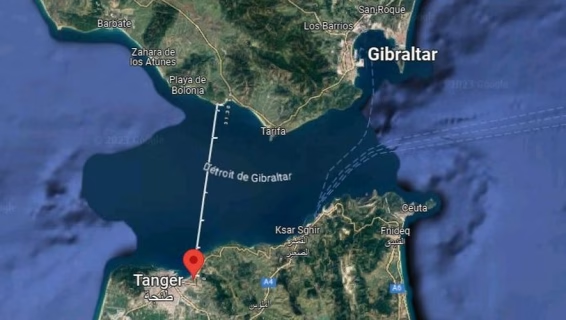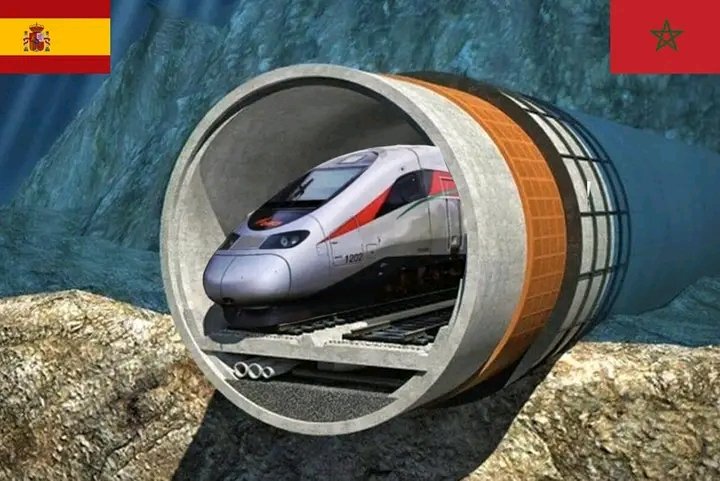Updated November 25, 2025:
The Spanish government has officially commissioned public engineering firm Ineco to design the reconnaissance gallery (galería de reconocimiento) for the Morocco-Spain rail tunnel project. Reconnaissance gallery is an exploratory tunnel dug before the construction of a main tunnel to study and confirm underground conditions. Local media outlet noted that the formal commission was issued this month by SECEGSA (Spanish Company for Studies on Fixed Communication across the Gibraltar Strait). On the other hand, the firm reports to the Ministry of Transport. The contract, worth nearly $1 million, establishes a detailed technical roadmap with a delivery deadline of August 2026. The scope includes various processes such as preliminary design of the reconnaissance gallery and revision of previous studies. It also entails comprehensive updating of routing, geology, geotechnical conditions, security systems, terminals, and associated installations.
This development comes after German company Herrenknecht confirmed the project’s technical feasibility in a study delivered to the Spanish government in June. The report concluded that despite extreme complexity, current technology is capable of executing the ambitious infrastructure project. The 38.5km tunnel would run from a point to the west of Algeciras in Spain to Tangiers in Morocco. Furthermore, it includes a 28km subsea section, according to an October 2025 report by International Railway Journal. Ambitious tunnel projects are springing up across across Africa. In a similar ambitious tunnel project, the Federal Government of Nigeria has announced plans to build what could become Africa’s First Underwater Tunnel. This tunnel will connect the ongoing Lagos-Calabar and Sokoto-Badagry highways.
May 11, 2025: Spain allocated €1.6 million to conduct feasibility studies for the proposed Morocco–Spain rail tunnel linking Europe and Africa. Reports from Spanish media indicated that the Ministry of Transport, led by Óscar Puente, revised the original budget from €2.4 million. Moreover, this was based on adjustments to the project’s planned activities. The proposed tunnel will run beneath the Strait of Gibraltar, establishing a direct connection between Europe and Africa across one of the world’s key maritime corridors.

Revenue obtained from near finished projects such as the Sagrada Familia Basilica will facilitate in completion of the Morocco-Spain Underway Tunnel. The church, which is expected to be a major tourist attraction site, will be elemental in providing revenue. The church is expected to attract local and domestic tourists once complete. Furthermore, it is currently the world’s tallest church after the first part of its cross was placed. The underwater tunnel will facilitate ease of access for tourists who may visit both Morocco and Spain. Moreover, it part of the much anticipated underwater tunnels such as the the world’s largest undersea tunnel in Norway, the Rogfast undersea tunnel.
Also read: Morocco-Spain High-Speed Rail Route Set to Link Madrid to Casablanca
Project Factsheet
Type: Primarily a rail tunnel designed for both high-speed passenger and freight trains. Road vehicle traffic is not currently planned.
Route: The most discussed route connects Punta Paloma (near Tarifa, Spain) with Punta Malabata (near Tangier, Morocco).
Length: The total tunnel length is projected to be around 38.5 to 42 kilometers, with approximately 27.7 to 28 kilometers running underwater.
Tunnel structure: The current design includes two railway tunnels and a service and safety gallery, connected by transverse passages at regular intervals (around 340 meters) and safety zones.
Diameter: Each single-track railway tunnel is planned to have an internal diameter of about 7.9 meters, while the service tunnel would be around 6 meters.
Gradient: The maximum gradient within the tunnels is projected to be around 3 percent.
Cost: Estimates vary significantly, ranging from €6 billion to €15 billion.
Also read: Spanish Firm Awarded Contract to Conduct Morocco-Spain Undersea Rail Line Study
Ineco Tasked to Conduct the Study
Ineco, which is a public company, will be responsible for conducting the Morocco-Spain rail tunnel study to determine financial viability of other construction alternatives. Currently, the Spanish government is utilizing the European Next Generation funds to fund the technical support work.
Two possible entry points of the tunnel are being considered on the Spanish side. One alternative is Algeciras with its strategic port and railway connections. The other entry point is the coast near Tarifa, Europe’s southernmost city.
Length of the Morocco-Spain Rail Tunnel
The tunnel is expected to stretch up to 38.5 kilometers. A total of 27.7 kilometers will run underwater. Additionally, it would contain two railway tunnels beneath the seabed.
“This permanent link infrastructure that will run across the Strait would entail of a crucial link in the Euro-Mediterranean transport network,” the Ministry of Transport stated. “The facilitation of passenger, goods and services flows will lead to the production of a quantitative and qualitative acceleration of the economy.”
Feasibility Studies of the Morocco-Spain Rail Tunnel
Herrenknecht, the world-leading German company in tunnel development and implementation, is the one studying construction feasibility. The company has an aim to complete their assessment by June. This information is according to SECEGSA, the Spanish Company for Studies on Fixed Communication across the Gibraltar Strait.
Also read: £6bn Africa-Europe Tunnel Studies Underway; Project to Kick Off Operations by 2030

